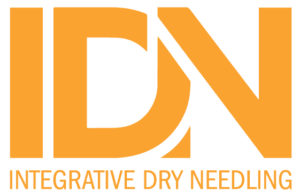Methodological considerations for dry needling trials in medial tibial stress syndrome
J Man Manip Ther. 2025 Dec 2:1-2. doi: 10.1080/10669817.2025.2595629. Online ahead of print. NO ABSTRACT PMID:41328671 | DOI:10.1080/10669817.2025.2595629
Home / My Account / Dry Needling Research
Authors:
David Tobaly, Patrice Tétreault, Guy Cloutier, Manon Choinière, Philippe Grondin, Véronique Freire, Anne-Sophie Julien, Nathalie J Bureau
Insights Imaging. 2024 May 11;15(1):113. doi: 10.1186/s13244-024-01695-8.
ABSTRACT
OBJECTIVE: To investigate the structural alterations, neovascularity, and elasticity of tendons and the relationship between elasticity and the Patient Rated Tennis Elbow Evaluation score after undergoing US-guided fenestration or surgery in patients with chronic lateral elbow tendinopathy.
METHODS: Participants from the per-protocol population of a randomized trial conducted between October 2016 and June 2020 were included. The surgery and fenestration groups included 24 (mean age, 50 ± 7 years [standard deviation], 10 men) and 29 (47 ± 8 years, 18 men) participants, respectively. Ultrasound exams were performed at baseline, 6 months, and 12 months. Statistical analyses included linear mixed effects and generalized equation estimation models.
RESULTS: Fenestration had no significant impact on tendon thickness (p = 0.46). Conversely, surgery significantly increased tendon thickness at 6 months (p < 0.0001) and remained elevated at 12 months (p = 0.04). Tendon echostructure exhibited a group effect (p = 0.03), indicating a higher proportion of pathological scores in the surgery group post-intervention compared to the fenestration group. Both groups showed a similar reduction in neovascularity from 6 to 12 months postintervention (p = 0.006). Shear-wave velocity increased in the fenestration group at 6 months (p = 0.04), while the surgery group experienced a nonsignificant decrease at 6 months, with some improvement at 12 months (p = 0.08). Changes in shear-wave velocity did not correlate with clinical outcome.
CONCLUSIONS: Fenestration and surgery reduced tendon neovascularity over time. Unlike surgery, fenestration did not impact tendon size while improving tendon echostructure and elasticity.
CRITICAL RELEVANCE STATEMENT: Fenestration and surgery equally alleviated symptoms and decreased tendon neovascularity in lateral elbow tendinopathy; however, fenestration did not alter tendon thickness and improved echostructure and shear-wave velocity, suggesting shear-wave velocity’s potential for quantitatively monitoring tendon elasticity during healing.
KEY POINTS: Reliable markers for monitoring healing response and informing treatment protocols in elbow tendinopathy are lacking. Fenestration and surgery reduced tendon neovascularity, while fenestration improved tendon echostructure and shear-wave velocity. Shear-wave velocity may provide quantitative measures to monitor tendon elasticity in response to treatment.
PMID:38734857 | DOI:10.1186/s13244-024-01695-8
J Man Manip Ther. 2025 Dec 2:1-2. doi: 10.1080/10669817.2025.2595629. Online ahead of print. NO ABSTRACT PMID:41328671 | DOI:10.1080/10669817.2025.2595629
J Man Manip Ther. 2025 Nov 29:1-10. doi: 10.1080/10669817.2025.2591677. Online ahead of print. ABSTRACT OBJECTIVE: Clinical guidelines recommend combining exercise with other
J Bodyw Mov Ther. 2025 Dec;45:493-501. doi: 10.1016/j.jbmt.2025.08.015. Epub 2025 Aug 31. ABSTRACT OBJECTIVE: Myofascial pain syndrome (MPS) is a chronic musculoskeletal
© Integrative Dry Needling 2025 | All rights reserved | Designed by Weblink
any IDN Course!
*Valid for new registrations only and can not be combined with other discount codes. Offer Expires: 7/7/2024

Not sure which course is right for you? No problem – we created an intuitive process to help!